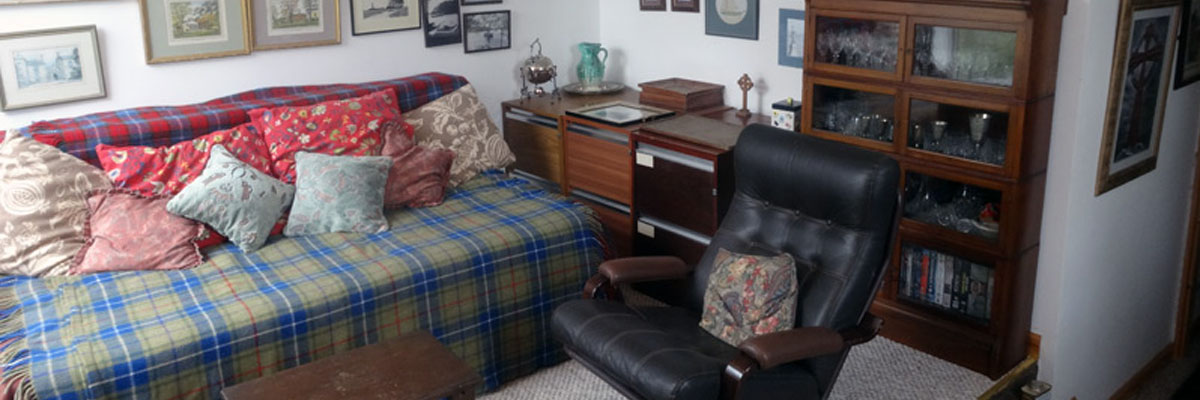Updated: 29/06/2020
How to Keep a Room Cool that faces the Sun
Ideally, the best way to keep a room cold is to keep the sun out. Excessive sunshine heats the room to become extremely hot. This phenomenon is especially true during heat waves and summers. The simplest way to combat the heat is to install an air conditioner. However, an air conditioner can be heavy on the electricity bills per month. It is also not environmentally friendly.
A room that faces the sun is great for most seasons but can create havoc in the summer. This room will heat up the fastest and make living in it unbearable. During the winter, the sun will naturally heat the room and provide ample warmth. In the winter, heating costs are much lesser than the rest of the year due to the heat from the sun.
Let us look at ways to keep a room cool that faces the sun.
Curtains or Drapes
We cannot stress how important it is to have drapes that help reflect the sunshine off from your windows. Light or white curtains on the outside help reflect the sun out. Keeping the drapes shut and allowing the sunshine to bounce off will help ensure that the sunlight and warmth do not find their way inside the room.
It would be best if you also kept your drapes shut during the day. Doing this traps the cold air inside, and prevents heat from entering. You can open them once the sun sets to allow fresh circulation of air.
Heat Reflecting Film
It is a good practice to install heat-reflecting film on all windows, not just the ones facing the sun. This film is quite cheap and does not cause a dent in your wallet. It also helps cut the glare of the sun and allows you to roam about freely during the day. Elderly citizens, pets, and children may find the sunshine to be excessive. Another drawback of direct harsh sunlight is temporary blindness.
To avoid these issues and concerns while keeping the heat out, you should consider installing good quality, thick heat reflecting film. If you want specific windows to receive the sunshine during winter, you should not add the film.

Ceiling Fans
Ceiling fans are an old method to keep the room fresh. Installing ceiling fans will ensure a steady circulation of air in the room while ensuring that there is no excess heat generated. The strain on the electricity bill is low in comparison to air conditioners, and the cleaning and maintenance of ceiling fans is easy too.
If you’re unsure about installing permanent ceiling fans or are living on rent, you could also consider portable table fans. These fans are easy to carry from one room to the next and are inexpensive.
Paint the roof white
Like the drapes and curtains, painting the roof white helps reflect the sunlight off. Doing this helps ensure there is no leakage of heat into the house or the room from the ceiling. Most homes get overheated because they have roofs that allow heat to pass straight into the house.
If you want, you could paint the entire house white, like our Mediterranean cousins. The temperature inside remains comfortable while reflecting the heat outwards.
Cotton Sheets
Avoid using satin and silk bed sheets and pillowcases in the room that faces the sun. The sunlight will heat the sheets and trap the warmth inside. Instead, opt for crisp linen and cotton sheets that keep the mattress and pillows dry at all times.
Some people even dampen the sheets (to be used as blankets) slightly to keep the warmth out. This is a great idea, but ensure that the sheets are not dripping wet or you may end up wetting the entire mattress.
Keep the lights off
Keeping the lights off, when not in use, is crucial. Lights generate a lot of heat. Rooms that face the sun should be kept dark as far as possible to trap the cold inside. Soft bedside lighting should be used instead of harsh and glaring overhead lights.
Keeping the lights off also eases the burden on the electricity bill each month. The longer days also mean that there is adequate light outside if you need it.
Insulate the room
Most people think insulation is only to trap heat. Insulation also traps the cold inside. Increase the insulation in the room to keep the ambient temperature low. Proper insulation will help keep you dry throughout the day, avoid excess heat from seeping into the room, and keep the temperature of the room cold.
Related Reads
Loft Space Ideas
Updated: 06/12/2020Loft Space IdeasMost homes in the UK have unused attic or loft areas. These neglected areas are either filled with junk or are ignored until they gather enough dust to last several lifetimes. This space can be utilised to create an addition to your...
How to Cool Down a Room
Updated: 13/11/20How to Cool Down a RoomHeatwaves can be extremely uncomfortable for many people. The warm months are quite harrowing in the UK. Most climate activists suggest that the excessive rise in temperatures is due to an unprecedented increase in global...
What does a Dehumidifier do?
Updated: 13/11/2020What does a Dehumidifier do?Most homes in the UK suffer from condensation and dampness. With the ever changing weather, clearing the house of any additional humidity is next to impossible. Most people rely heavily on the sunshine and fresh air to...
Best Way to Iron a Shirt
Updated: 13/11/2020Best Way to Iron a ShirtAnyone can buy clothing like pants, shirts, ties, socks, and shoes. However, you look impressive only when you know how to wear and carry these clothes. While you may feel some fabrics look good on you, the fact remains that...
How to Clean a Carpet
Updated: 23/07/2020How to Clean a CarpetThe best way to make your home cosy and comfortable is to cover the flooring with carpets. Carpets add to the elegance and beauty of the house. Apart from the visual appeal, they also help with the insulation of the entire room....
Keeping the House Cool in Extreme Heat
Updated: 30/06/2020 Keeping the House Cool in Extreme Heat The UK can experience deadly heat waves with temperatures rising to 35C – 40C. This debilitating heat can permeate the walls of your home and increase temperatures further. It is crucial to keep the house cool...






